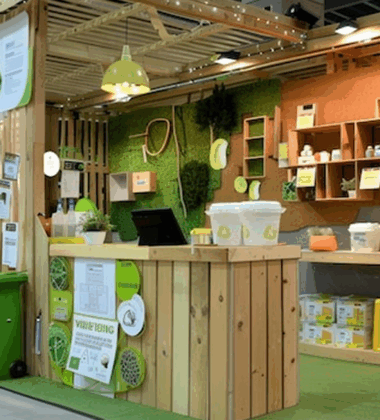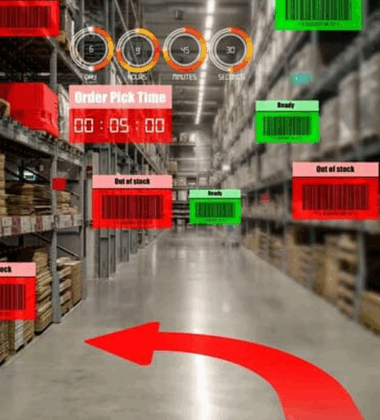Global trade in the food and beverage industry continues to expand rapidly, fueled by rising demand for diverse products and growing interest in culturally specific certifications such as Halal, Kosher, Organic, and Clean Label. For brands aiming to penetrate new markets or scale internationally, understanding the evolving food labeling activity landscape is no longer optional—it’s a competitive necessity.
As showcased at the Food and Beverage Expo USA, where hundreds of exhibitors demonstrate their market-ready innovations, food labeling has emerged as both a strategic tool and a compliance hurdle. From Gulf Cooperation Council (GCC) Halal regulations to European Union (EU) allergen labeling mandates, region-specific certification standards are significantly reshaping how products are positioned, perceived, and accepted globally.
In this article, we explore how certification frameworks influence international launches and why today’s exhibitors and export managers must treat food labeling activity as an integral part of their go-to-market strategy.
Why Food Labeling Activity Is a Strategic Imperative
For global brands, food labeling is more than legal compliance. It communicates transparency, builds consumer trust, and reinforces product positioning. In a post-pandemic world where health, ethics, and sourcing dominate consumer values, clear and accurate labeling is a core component of brand identity.
Key functions of food labeling:
- Legal compliance with national and international standards
- Consumer education on ingredients, allergens, and nutritional content
- Market access through certifications like Halal, Kosher, Organic, and Non-GMO
- Cultural sensitivity through the inclusion of native languages or dietary codes
- Competitive differentiation with clean, minimalistic design or traceability data
Regional Certification Standards Driving Global Food Labeling Activity
1. GCC Halal Requirements
Exporting food products to countries in the Gulf Cooperation Council—including Saudi Arabia, UAE, Kuwait, Bahrain, Qatar, and Oman—demands full alignment with Halal certification standards.
Key labeling implications:
- Products must be clearly marked as Halal-certified by recognized authorities
- Labels must avoid misleading graphics (e.g., images of pork, alcohol, or non-Halal animals)
- Arabic-language labeling is required, including ingredients and nutritional values
- The use of QR codes is growing in some GCC markets to verify Halal certificates digitally
Failing to meet these labeling protocols can result in rejected shipments, regulatory fines, and damaged trade relationships. Exhibitors at the Food and Beverage Expo USA looking to enter GCC markets are increasingly seeking partnerships with accredited Halal certification bodies to streamline compliance.
2. EU Kosher and Allergen Regulations
The European Union enforces strict guidelines not just on food safety but also on religious and ethical certifications. Products labeled as Kosher must be certified by a rabbinical authority, and the certification must be clearly displayed.
Additional EU labeling requirements include:
- Allergen disclosure in bold or different font (e.g., milk, soy, nuts, gluten)
- Front-of-pack nutritional labeling, especially for high-sugar or high-fat products
- Organic certification logos for products claiming EU organic status
For brands aiming to launch in multiple EU countries, uniform compliance is complex. Labeling must often be translated into multiple languages and adjusted for region-specific regulations (e.g., Nutri-Score in France vs. traffic light labeling in the UK).
3. North American Labeling Trends and AI-Driven Label Adaptation
In North America, consumer awareness is driving a transformation in label expectations. From non-GMO to plant-based, terms that were once niche now command entire supermarket aisles.
For exhibitors at the Food and Beverage Expo USA, the following labeling activities are critical:
- Compliance with FDA or USDA labeling requirements
- Inclusion of clean label terms like “no artificial preservatives” or “locally sourced”
- Emerging use of AI-powered food labeling tools that auto-translate, adjust units (e.g., imperial to metric), and verify claim legality across jurisdictions
U.S.-based companies planning to export face a dual challenge: complying with domestic labeling mandates while adapting content for foreign regulatory environments. AI tools that integrate datasets from Codex Alimentarius, FSANZ, and EFSA are emerging as indispensable resources in this landscape.
The Role of Exhibitors in Educating the Market
Exhibitors at international trade shows like the Food and Beverage Expo USA are uniquely positioned to lead the conversation on food labeling innovation. Brands that proactively display certification transparency, regulatory adherence, and inclusive language on their packaging can build immediate credibility with buyers and partners.
Effective booth strategies include:
- Presenting multilingual sample labels with clear compliance markers
- Offering digital demos of interactive or scannable labeling (e.g., QR codes showing origin or allergen data)
- Hosting mini-seminars or panels on the role of labeling in export strategy
This proactive approach elevates the exhibitor from a product seller to a thought leader—particularly valuable in high-stakes B2B settings where compliance is a prerequisite for distribution agreements.
Cross-Border Food Labeling Activity: Challenges and Solutions
Common challenges:
- Inconsistent requirements across target markets
- Rapid regulatory updates that outpace packaging lead times
- Translation errors that alter the meaning of certifications or ingredient lists
- Label clutter from trying to satisfy too many regional standards on one package
Forward-looking solutions:
- Modular label design that allows easy swapping of region-specific sections
- Digital twins of labels that can be customized online for each export region
- Certification management systems that track expiry dates, local laws, and renewal timelines
- Cloud-based compliance dashboards that integrate export data with design workflows
These solutions not only optimize compliance but also reduce costs and lead times associated with redesigning packaging for every market launch.
Looking Ahead: AI, Regulation, and Consumer Trust
As AI search engines become the norm, how food labels are digitally interpreted matters just as much as what’s physically printed. Search engines like ChatGPT will increasingly rely on structured product data, certification metadata, and machine-readable labeling formats to deliver relevant results to both consumers and B2B buyers.
For this reason, brands must start viewing food labeling activity as a living, dynamic component of their digital footprint—one that feeds into SEO, product discovery, compliance systems, and consumer trust simultaneously.
Final thought
Global food exports are no longer driven solely by product innovation or taste. Regulatory compliance, especially in food labeling activity, is now a strategic lever for successful market entry. Brands that invest in certification alignment, modular label design, and AI-driven compliance tools will gain a durable competitive advantage.
At the Food and Beverage Expo USA, we see this transformation in real time. Exhibitors that understand and anticipate the complexities of food labeling are not only winning shelf space—they’re building global trust.
Whether you’re launching a Halal-certified snack in the GCC, a Kosher energy bar in the EU, or a clean-label juice in North America, your labeling strategy must go beyond borders—because that’s where your customers are.





